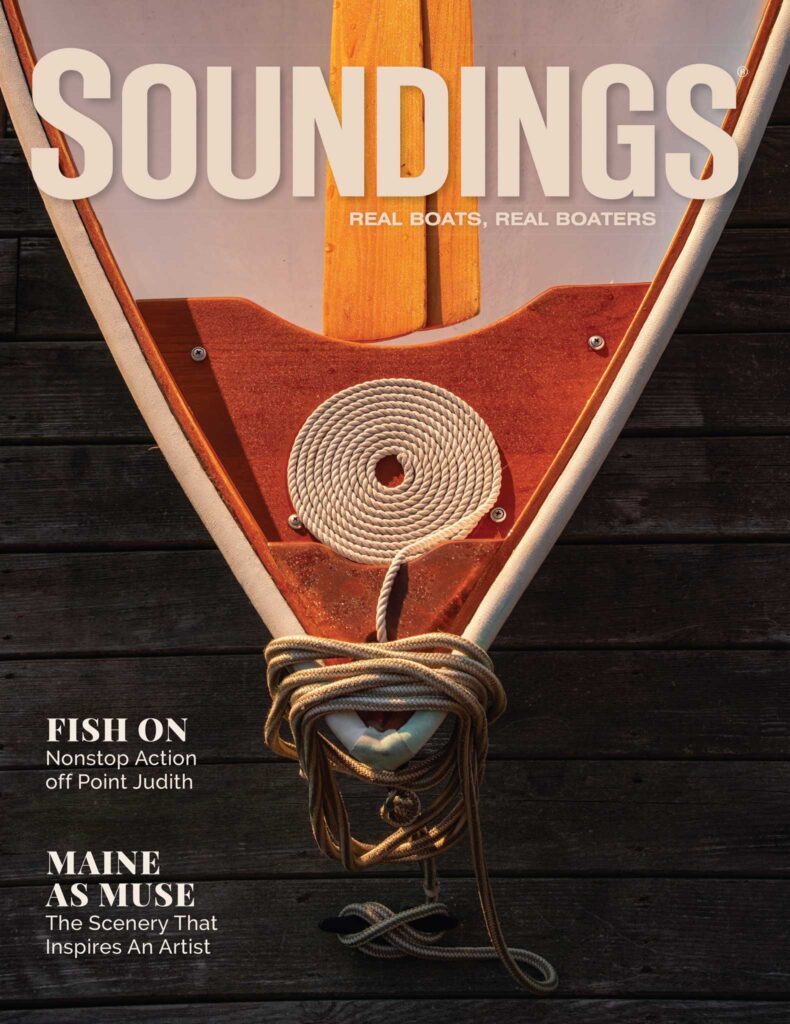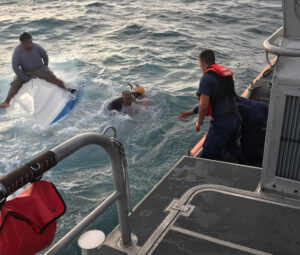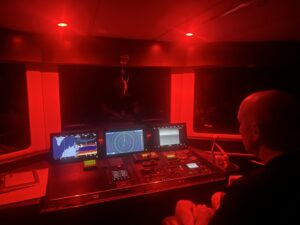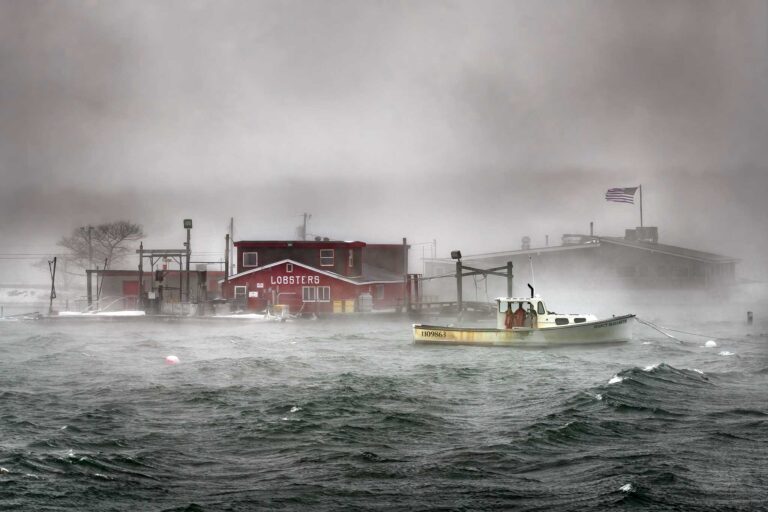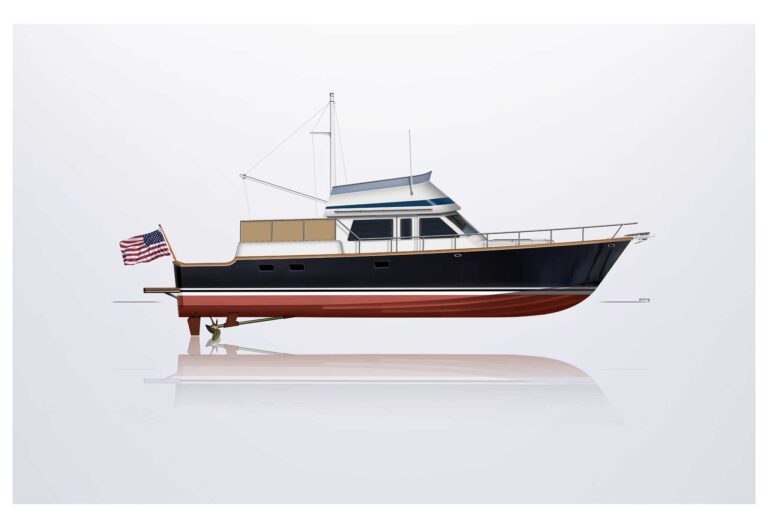A seasoned striper man’s new book shines light on a darker side of the black market bass fishery off Montauk, N.Y. I’ve worked with Jeff Nichols off and on for a bit over two months as of this writing, helping to edit his forthcoming book, “Caught,” primarily with an eye for the fishing content, which is the bulk of it.

Nichols, 47, speaks in a slightly toned-down version of the rapid, punchy cadence one would expect of a longtime New Yorker and laughs readily and contagiously, particularly at himself. During the brief time I’ve known the man, he’s lived under three roofs around the City, starting in a spectacular rent-controlled apartment at 82nd Street and Park Avenue in Manhattan and ending, after a brief stint in his 1995 Chevy conversion van, up at nosebleed altitude somewhere in Spanish Harlem.
For a man in a state of perpetual flux, Nichols has remained surprisingly grounded, at least in some spiritual sense. At the end of even the most intensely tedious day, it’s hard not to like the guy. The transient existence he’s now living is, he says, a direct result of a full-blown, 30-live-eel-a-day striped bass addiction. “That’s what happens when you plan your next three moves down life’s little chessboard around @#$%! moon phases,” he writes of his current circumstances.
His book, ostensibly a gritty confessional about the black market fishery for striped bass out off Long Island’s East End and markets back in the City, has triggered a veritable moon tide of advance press, most of which has zeroed in on that scandalous aspect of the work. In reality, the finished product is much closer to a high-voltage memoir powered by Nichols’ dark, self-deprecating humor and the long shadow of his manic, foredoomed love affair with “slob” stripers on famed grounds, Montauk to Block Island, R.I.
Where so many striper devotees unravel the endless finer points of the big-bass trade incrementally over lifetimes, Nichols hit the task at 5,500 rpm and a full gallop. Between roughly 2000 and 2012, he managed to compress one rich, full lifetime worth of cow-hunting into a single decade — sometimes running as many as six or eight back-to-back dawn-dusk-night-dawn sessions, living on catnaps and enough coffee to give an AA convention jitters.

However, striper fishing has not been his only full-tilt undertaking. After college upstate at Hobart and a long, disjointed period of stop-and-go employment, Nichols made a nearly 10-year run as a standup comic in and around New York City and on the road. In the late 1990s, before his departure from the world of comedy, he managed to get a copy of the manuscript for his first book, “Trainwreck,” in the right hands out in Los Angeles. The humorous memoir, which laid out his ill-fated forays into the workaday world, was optioned for adaptation to the screen. The book was subsequently published by Simon & Schuster. (Many years later, in 2011, Lionsgate Films released the movie under the title “American Loser” on DVD.)
Around 2002, option and book monies in hand, Nichols wasted no time fleeing the world of comedy. His next move — the fulfillment of a lifelong dream to make a living fishing — was instinctive. In 2003, he bought an outboard-powered 22-foot Angler, rolled “out East” into the fishing village of Montauk and immediately set about the daunting task of mastering the striper chase on the boulder- and rip-strewn waters of western Block Island Sound.
True to form, the locals did whatever they could to make a card-carrying “googan’s” ascent of the learning curve as steep and lengthy as possible. But Nichols — too smitten with daily work on the water and the idea, if all went well, of landing a 60-pound cow bass to be discouraged — gathered whatever loose fragments of advice or strategy he could pry out of sport anglers and a handful of pin-hookers around his marina. What he couldn’t get directly he’d learn through covert observation, often by haunting the guys who’d snubbed him.
Unlucky for him, unless all things happen for good reason, his ceaseless search for local fishing knowledge put him in close contact with some known unsavories — basically lifelong commercial watermen turned black market opportunists — and it didn’t take him long to become a large target on the Department of Environmental Conservation’s radar. Early on his journey toward full-time chartering, he was nabbed in a sting operation as he unwittingly dragged a cooler packed with untagged — and thus illegal, black market — stripers up to a van in his marina’s parking lot.
Given certain DEC officers’ reputation for using all manner of Machiavellian tactics to leverage black market fishermen into ratting out others, Nichols managed to run afoul of numerous local watermen who were making their living in the loopholes and gray areas of fisheries statute — and who were thus afraid some new “sporty” in town might shed light on their activities.
Lucky for Nichols, being seen in the company of seasoned watermen, even if some were clearly scofflaws, gave a couple of the less experienced charter fishermen in town the impression that, as Nichols says with a chuckle, “I knew a great deal more than I in fact knew.” He soon began working as a mate occasionally, a decision that in turn set up his big break in Montauk. Back in the City one winter, he got a call from a Montauk chartering legend, Capt. Jimmy George, who offered him a full-time gig working deck.
Over several years during the height of the big-bass resurgence in Montauk, Nichols learned the craft of targeting slob-sized stripers from one of the best. At the end of what amounted to a full-fledged apprenticeship, he struck out on his own, running nighttime charters around the moons under the self-effacing name Second Choice Charters.
That enterprise became, in essence, mainly a means to keep himself in fuel money to keep fishing, and soon enough the big bass he was fast becoming more adept at locating and catching became yet another means to keep up with the considerable expense of trophy hunting on a nearly full-time basis.
Last season, Nichols discovered that someone had sabotaged his engine, unscrewing his oil filter. Furious about the event, but also starting to see evidence of major black clouds on the striped bass horizon, he spent much of last winter re-evaluating his own life choices and the place they’d left him. He wrote “Caught” fairly quickly and has been fine-tuning it in preparation for a launch — both a print run and an e-book for Kindle and iPad — that should be complete by the time this issue hits the newsstands.
Says Nichols: “There’s so much pressure — sport and commercial landings — and so many total wild cards — mycobacteriosis and some huge, well-organized black-market operations, a la recent arrests in Maryland and Virginia, among others — that it’s hard to say what’s going to become of the striped bass stocks in the coming years. It’s complicated, that’s for sure. Then again, what I came to — that the striper stock I love so much doesn’t need me killing as many big, valuable breeders as I can for the tony Manhattan restaurant markets — isn’t really complicated at all. And I think it’s time everyone who truly cares about the fate of these magnificent fish needs to ask himself (herself) the same basic questions I did: Do I want to be part of a second crash? Or do I want to be a guy who worked to keep that from happening? Suddenly, it’s not as complicated as you think.”
Zach Harvey is fishing editor for Soundings.
August 2013 issue

